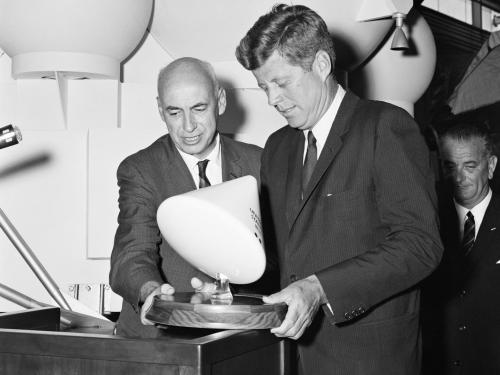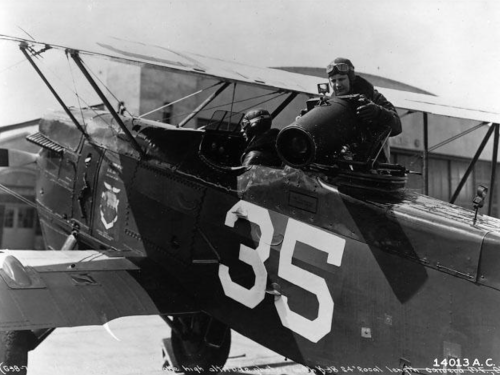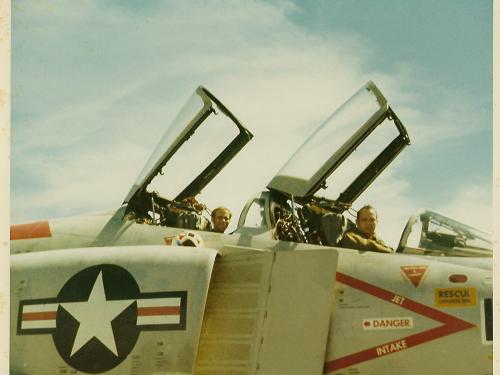
Stories of daring, stories of technological feats, stories of prevailing against the odds ... these are the stories we tell at the National Air and Space Museum. Dive in to the stories below to discover, learn, and be inspired.
Showing 21 - 30 of 158

September 20, 2023
A ribbon bar in the Museum's collection offers a timeline of the famed aviator’s illustrious military career

September 20, 2023
Foam 331's new display at the Museum's Steven F. Udvar-Hazy Center honors first responders

August 23, 2023
In 1961, President John Kennedy called on the nation to send a man to the Moon. In 1969, the United States did just that. Today, many are familiar with the story of Neil Armstrong’s first few steps on the Moon (cue the “That’s one small step...” quote), but have you ever questioned why we invested so much time, effort, and national attention in getting there?

August 09, 2023
Rockets launched the Space Age. They provided the power needed to take spacecraft and people on flights beyond the Earth.

June 23, 2023
During World War I, a new form of espionage took flight—literally. Photography from aircraft was introduced as a new way to spy.

June 05, 2023
The healing power of art.

March 31, 2023
Project Paperclip was a program that brought German and Austrian engineers, scientists, and technicians to the United States after the end of World War II in Europe.

September 09, 2022
Today we cannot imagine war without the airplane, but there was a time when the airplane's military potential was not yet apparent.

July 07, 2022
Learn about the integral role speed played during the Cold War.

June 21, 2022
For the crews of US Navy Fighter Squadron 31 (VF-31, the “Tomcatters”), June 21, 1972, was the last day of their first line period of sustained operations onboard the USS Saratoga before a scheduled week off. That day proved to be one of the most significant in the squadron’s history. Discover why.